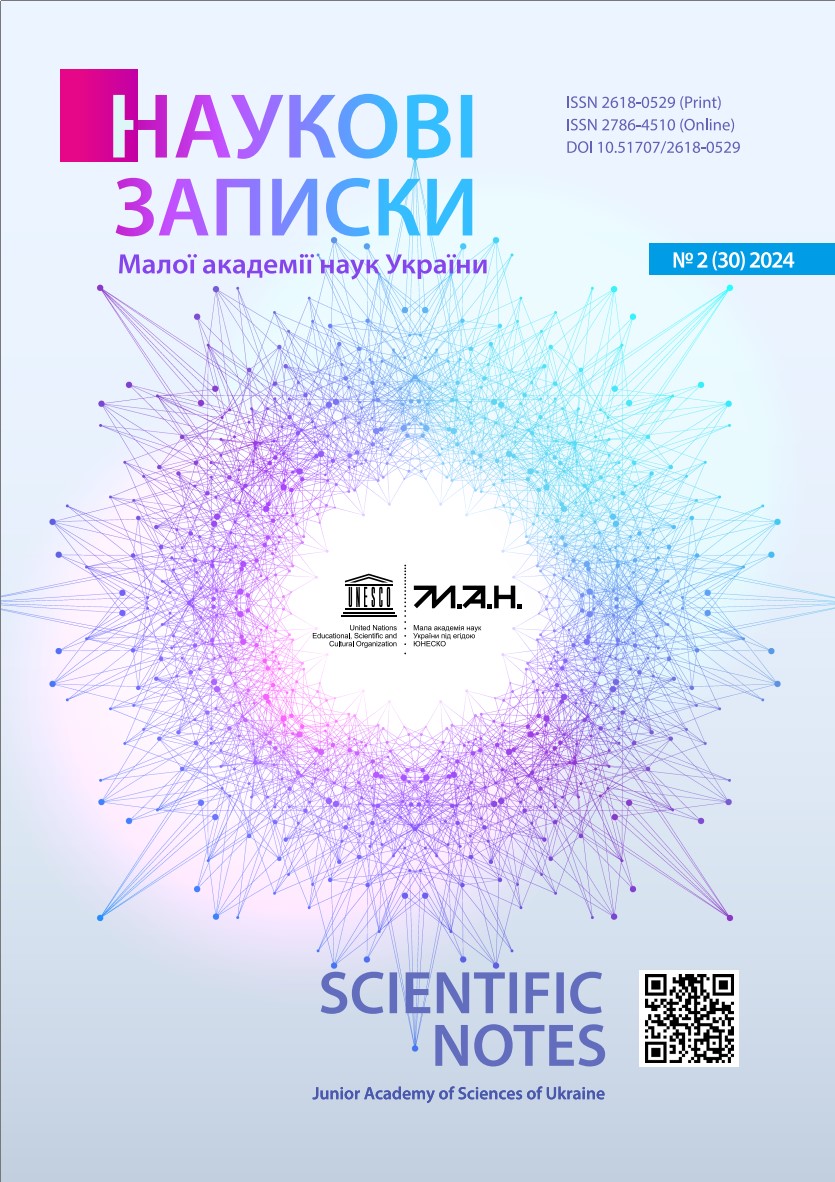Introduction of remote sensing technologies in the educational process of the Junior Academy of Sciences of Ukraine: retrospective, current conditions and prospects
DOI:
https://doi.org/10.51707/2618-0529-2024-30-02Keywords:
Junior Academy of Sciences of Ukraine, Remote Sensing, Satellite Images.Abstract
The article describes the experience of introducing remote sensing technologies into the educational process of the Junior Academy of Sciences of Ukraine as an educational innovation. Ten conditional stages of implementation of this innovation are identified, specified and generalized, in particular: identification of contradiction, generation of an idea, development of innovation, testing of innovation, verification of effectiveness of innovation, correction of innovation in accordance with the results of the previous stage, scaling, verification of effectiveness of innovation in scaling, improvement of innovation and organic integration or stagnation. According to the defined stages of the introduction of remote sensing technologies into the educational process of the Junior Academy of Sciences of Ukraine, the author outlines their effectiveness, in particular, at the first stage — the identification of contradictions, describes some international projects aimed at introducing remote sensing technologies into the educational practice of the school level: The use of Landsat satellite images in school education (UK); FIS project (Germany); Colors of Earth project (Poland); YCHANGE project (Czech RepublicGermanyEstoniaSwitzerland); GLOBE project (USA) and others, compared to projects implemented in Ukraine and related to remote sensing: the GIS in Geography section of the Kyiv Junior Academy of Sciences of Ukraine, NASA projects involving students from Ukraine: Sally Ride EarthKAM and GLOBE. A visual representation of the author’s model of information and educational system of science education of participants of the educational process of the Junior Academy of Sciences of Ukraine for the use of remote sensing technologies is presented. On the basis of a retrospective analysis of the introduction of remote sensing technologies into the educational process of the Junior Academy of Sciences of Ukraine, the current state and prospects for the development of this innovation are outlined.
References
Curran, P., & Wardley, N. (1985). Remote Sensing in Secondary School Geography: the Place of Landsat MSS. Geography, 70 (3), 237–240. Retrieved from https://www.jstor.org/stable/40570957.
Bairak, H. R., & Mukha, B. P. (2010). Dystantsiini doslidzhennia Zemli [Remote sensing of the Earth]. Lviv : Vydavnychyi tsentr LNU imeni Ivana Franka [in Ukrainian].
Datsenko, L. M., & Ostroukh, V. I. (2013). Osnovy heoinformatsiinykh system i tekhnolohii [Fundamentals of geographic information systems and technologies]. Kyiv [in Ukrainian].
Voss, K., Goetzke, R., Thierfeldt, F., & Menz, G. (2007). Integrating Applied Remote Sensing Methodology in Secondary Education. Proceedings of the IEEE International Geoscience and Remote Sensing Symposium. (Рр. 2167–2169). Barcelona.
Dziob, D., Krupiński, M., Woźniak, E., & Gabryszewski, R. (2020). Interdisciplinary Teaching Using Satellite Images as a Way to Introduce Remote Sensing in Secondary School. Remote Sensing, 12 (18), 2868. DOI: https://doi.org/10.3390/rs12182868.
Schulman, K., Fuchs, S., Hämmerle, M., Kisser, T., Laštovička, J., Notter, N. et al. (2021). Training Teachers to Use Remote Sensing: The YCHANGE Project. Review of International Geographical Education (RIGEO), 11 (2), 372–409.
Adaktylou, N. (2020). Remote Sensing as a Tool for Phenomenon-Based Teaching and Learning at the Elementary School Level: a Case Study for the Urban Heat Island Effect. International Journal of Educational Methodology, 6 (3), 517–532.
Amici, S., & Tesar, M. (2020). Building Skills for the Future: Teaching High School Students to Utilize Remote Sensing of Wildfires. Remote Sensing, 12 (21), 3635. DOI: https://doi.org/10.3390/rs12213635.
Asimakopoulou, P., Nastos, P., Vassilakis, E., Hatzaki, M., & Antonarakou, A. (2021). Earth Observation as a Facilitator of Climate Change Education in Schools: The Teachers’ Perspectives. Remote Sensing, 13 (8), 1587. DOI: https://doi.org/10.3390/rs13081587.
Babiichuk, S. M., Dovgyi, S. O., & Davybida, L. I. (2024). Remote sensing as a tool for science education and engagement: the case of the All-Ukrainian competition “Ecoview”. EGU General Assembly 2024. Vienna, Austria, 14–19 Apr 2024, EGU 24-6381. DOI: https://doi.org/10.5194/egusphere-egu24-6381.
Downloads
Published
How to Cite
Issue
Section
License
Copyright (c) 2024 Scientific notes of Junior Academy of Sciences of Ukraine

This work is licensed under a Creative Commons Attribution 4.0 International License.













